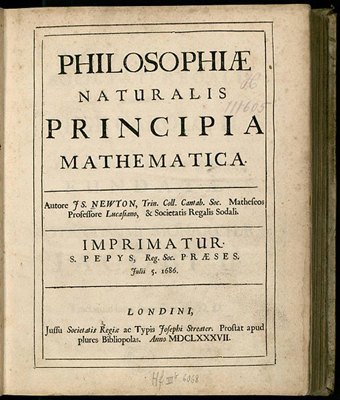[Openstax, College physics 2e, Dynamics: Force and Newton's laws of motion] Force and Newton's laws of motion: Introduction to forces and Newton's laws
 Introduction to dynamics: Newton’s laws of motion
Introduction to dynamics: Newton’s laws of motion

Motion draws our attention. Motion itself can be beautiful, causing us to marvel at the forces needed to achieve spectacular motion, such as that of a dolphin jumping out of the water, or a pole vaulter, or the flight of a bird, or the orbit of a satellite. We previously studied motion and obtained descriptions of the way objects move, such as their velocity and their acceleration. Dynamics considers the forces that affect the motion of moving objects and systems. Newton’s laws of motion are the foundation of dynamics. These laws provide an example of the breadth and simplicity of principles under which nature functions. They are also universal laws in that they apply to similar situations on Earth as well as in space.
Isaac Newton’s (1642–1727) laws of motion were just one part of the monumental work that has made him legendary. The development of Newton’s laws marks the transition from the Renaissance into the modern era. This transition was characterized by a revolutionary change in the way people thought about the physical universe. For many centuries, natural philosophers had debated the nature of the universe based largely on certain rules of logic, with great weight given to the thoughts of earlier classical philosophers such as Aristotle (384–322 BC). Among the many great thinkers who contributed to this change were Newton and Galileo.

It was not until the advent of modern physics early in the 20th century that it was discovered that Newton’s laws of motion produce a good approximation to motion only when the objects are moving at speeds much, much less than the speed of light and when those objects are larger than the size of most molecules (about #\unit{10^{-9}}{m}# in diameter). These constraints define the realm of classical mechanics, as discussed in Introduction to the nature of science and physics. At the beginning of the 20th century, Albert Einstein (1879–1955) developed the theory of relativity and, along with many other scientists, developed quantum theory. This theory does not have the constraints present in classical physics. All of the situations we consider in this chapter, and all those preceding the introduction of relativity in special relativity, are in the realm of classical physics.
The importance of observation and the concept of cause and effect were not always so entrenched in human thinking. This realization was a part of the evolution of modern physics from natural philosophy. The achievements of Galileo, Newton, Einstein, and others were key milestones in the history of scientific thought. Most of the scientific theories that are described in this book descended from the work of these scientists.

Or visit omptest.org if jou are taking an OMPT exam.



